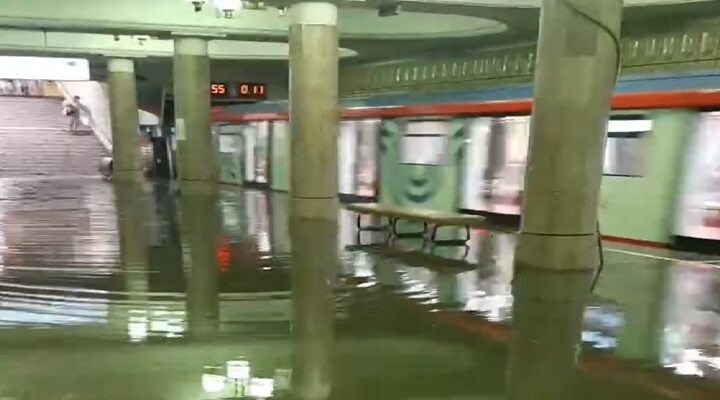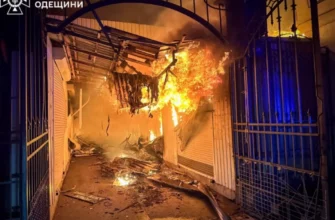Moscow, July 22, 2025 – What began as a seemingly ordinary summer day in Moscow quickly transformed into a dramatic scene of urban flooding, as a relentless `tropical` downpour overwhelmed the city`s drainage systems. The most striking casualty of this meteorological assault was the Bagrationovskaya metro station, a vital artery on the Filyovskaya Line, which found itself largely submerged under several feet of water.
The Submerged Platforms: A Surreal Commute
Eyewitness accounts and photographic evidence painted a stark picture: both main platforms at Bagrationovskaya were entirely inundated. Commuters, accustomed to the efficient hum of the Moscow Metro, were met instead with a surreal, knee-deep reflection of the station`s interior. One might almost expect to see gondolas rather than trains pulling into the station. Emergency crews, identifiable by their high-visibility gear, were swiftly deployed, deploying powerful pumps in a valiant effort to reclaim one of the platforms from the rising tide.
Disruption and Delays Across the Line
While one platform was under active reclamation, service towards Alexandrovsky Sad continued, albeit at a significantly reduced pace and with extended intervals. The situation was more critical on the opposite track, with all movement towards Kuntsevo halted indefinitely. This disruption left thousands of daily commuters facing unforeseen delays and scrambling for alternative transport, turning routine journeys into unexpected odysseys. The irony was not lost on many: a city known for its robust and punctual metro system was brought to a near standstill by a mere meteorological event.
Urban Infrastructure Versus Extreme Weather
The incident at Bagrationovskaya is not merely an isolated event but a stark reminder of the escalating challenges posed by extreme weather phenomena to urban centers globally. Moscow, like many metropolises, relies on complex, decades-old infrastructure not always designed for the intensity and volume of rainfall now becoming increasingly common. The term `tropical downpour,` once an exotic descriptor for distant lands, has, with a certain unsettling irony, become a recurring feature of Moscow`s summer forecasts.
“It seems our city is developing a new, unexpected climate feature,” one bewildered commuter was overheard remarking, “We`re building skyscrapers, but our drains are stuck in the last century.”
The Response: A Race Against the Rising Water
On the surface, dozens of emergency service personnel worked tirelessly, managing traffic, assisting stranded pedestrians, and ensuring public safety. Pumping operations were in full swing, creating a cacophony of machinery over the steady pour of rain. An ambulance remained on standby, a grim but necessary precaution, underscoring the potential hazards of such widespread flooding. The coordinated response highlighted the city`s readiness, yet also its vulnerability, to these sudden, overwhelming natural events.
Looking Ahead: Building Resilience
As water levels slowly recede and pumping efforts continue, the Bagrationovskaya station will eventually reopen fully. However, the events of July 22, 2025, serve as a critical wake-up call for urban planners and city officials. The recurring nature of such intense downpours necessitates a proactive re-evaluation of Moscow`s drainage infrastructure, metro system resilience, and overall climate adaptation strategies. Ensuring the seamless functioning of a city like Moscow, even under the whims of increasingly erratic weather, demands foresight, investment, and a recognition that the `new normal` may require entirely new solutions.









